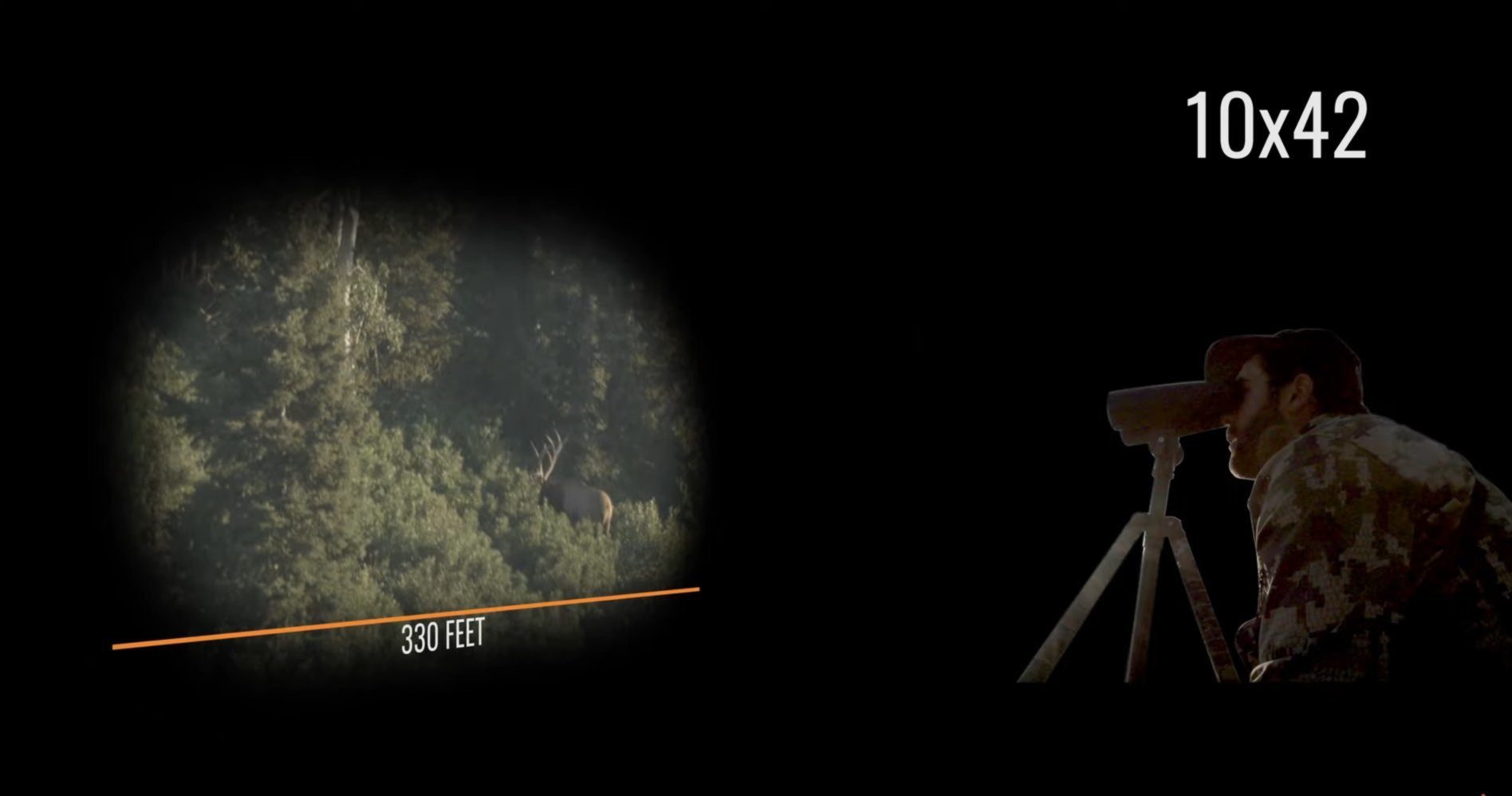Focusing Mechanisms Of Binoculars For Hunting
There are two types of focusing mechanisms for binoculars. Most people go for the center-focus model, which uses a centrally mounted wheel you adjust both eyepieces the same time. The right eyepiece also has a separate adjustment, which helps to correct for any difference in near or farsightedness between your eyes.
If you want to use your binoculars for other purposes apart from astronomy, this model is the most popular and best suited, because focusing requires just one quick adjustment.
The next focusing system uses individually focused eyepieces and has no centrally located focusing mechanism. Though being slower in focusing compared to the previous model, binoculars that use individual focus have been proven to be more rugged and less prone to being infiltrated with moisture.
If you intend to use your binoculars for night sky observation, then these models are the best choice for you, because celestial objects don’t change their distance making frequent refocusing not necessary.
Focusing Mechanisms of binoculars for hunting
Waterproofing
Rather than spend much cleaning your binoculars, it will be better you consider purchasing waterproof models. These model types are designed to resist the continuous changes in temperature and humidity, making it impossible for moisture to damage the internal parts of the instrument. Waterproof models are a must if you plan to use binoculars for birding, boating, hiking, hunting or other outdoor activities.
Baffling
Within the binocular, the role of baffling is to shield against stray light and internal reflections, and it can dramatically improve contrast. To know if your binocular has quality internal baffling, point it at a bright surface and observe the field of view. A black background will surround it, without additional light or shiny reflections.
Collimation
Basically, binoculars are two small telescopes mounted side by side, because of this, an error in collimation (optical and mechanical alignment) can lead to a number of problems including eyestrain and double-images.
Most inexpensive binoculars are shipped out from the manufacturers with collimation problems, and even as the quality models age, they do come out of alignment and get bumped around. To avoid this problem, you need to buy binoculars with quality mechanics, which will last longer before collimation errors become an irritation.
Stabilizing The View
For binoculars of any model to give their best, they need to be held steady. This completely removes the constant jiggling associated with hand-holding, and gives you an open view to see small details and objects fainter than you might think possible.
A simple camera tripod is a traditional and least expensive mount for binoculars. Most binoculars are designed with a threaded mounting hole and an L-shaped adapter screws into the hole and onto the tripod. If your binocular does not come with an adapter, you can purchase it separately or even construct one for yourself.
However, the not too pleasant thing about this mounting is the difficulty in using it and the tiring for the neck, especially when observing near zenith objects. This problem can be taken care of by purchasing a commercial mount that is specially designed for astronomical use, or you go for image-stabilized binoculars if your budget can carry it.
Image-stabilized binoculars have an active built-in an optical system that compensates for the movement associated with hand-holding. All that is needed is for you to press a button on the top of the binocular housing, and you will get a tripod-like stability with the convenience of hand-holding.
These models however has some drawbacks like their small apertures, and costs several times more than their non-stabilized equivalents.

